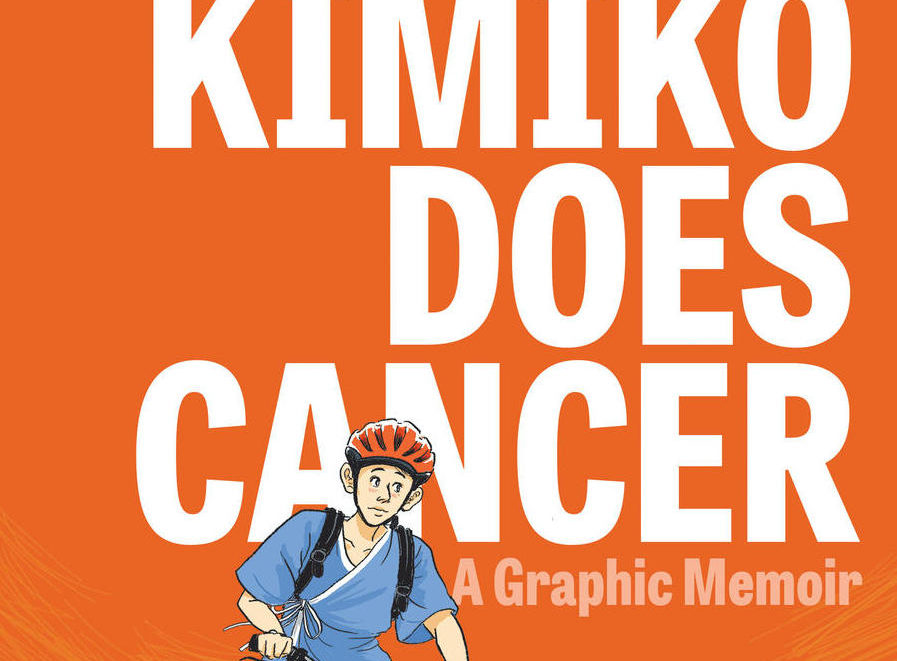
Kimiko Does Cancer
Kimiko Tobimatsu
Arsenal Pulp Press, 2020
Review by Muniyra Douglas
A life turned upside down by a single phone call. A young woman must navigate difficult familial, platonic, and romantic relationships suddenly impacted by a new medical revelation. Kimiko Does Cancer is a graphic memoir written by Kimiko Tobimatsu and illustrated by Keet Geniza. It’s the first novel for both and it follows Kimiko’s harrowing journey as she balances life, relationships, and her career while battling breast cancer. Although described as a cancer-survivor narrative, the novel, like Kimiko, is not a monolith.
As a queer, mixed-raced woman, Kimiko provides a unique outlook on her medical journey, which subverts the traditional cancer narrative. It conjures uncomfortable, often-ignored conversations around poor medical advice, fertility and family planning, sexual intimacy, social isolation, and mortality. Working as an unemployment lawyer, Kimiko understandably finds herself struggling to balance work while battling cancer. She mismanages work burnout and, due to the medication, experiences menopause-like symptoms, periodically exhibiting hot flashes during client consultations. This, inclusive of her “age, race, gender, and gender presentation,” vastly undermines her credibility as a lawyer. Kimiko’s internal dialogue brings acute awareness to the considerable discrimination she encounters within the professional sector even prior to her diagnosis.
The use of colour in the illustrations emphasizes the emotions that Kimiko feels at different points in her narrative. The entire novel follows a monochromatic colour scheme, which represents Kimiko’s emotional state and the serious subject matter. The intense scenes between Kimiko and her ex-partner are darkened exponentially, highlighting their emotional anguish and despair. A critique of the novel, though, is its heavy reliance on the text. The illustration panels are so supportive of the narrative, they could have easily replaced some of the script. The perpetual dialogue certainly limited my imagination, since there was very little opportunity to fully interact with the novel’s structure and its relation to the story.
The narrative offers insight into some of the hurdles intersectional, gender non-conforming identities experience while navigating the medical industry. Kimiko visits multiple medical practitioners with varying advice and zero consensus–a terrifying reality for many doctor-patient experiences. One practitioner erroneously advises that “only women who sleep with men need paps” (pap smears). It is presumed that people should trust medical professionals as the authority. However, as Kimiko learns, they are not absolved from providing misinformation, as well as possessing medical biases. She occupies identities that are often neglected and marginalized by the medical industry. Her sexual orientation and gender identity establish her as more vulnerable. Kimiko’s account proves that patients must be proactive, conduct independent research and explore their options and multiple consultations.
Kimiko’s social life takes a significant hit as she is unable to engage normally. It puts a tremendous amount of strain on her friendships and leaves her even more isolated. If the quarantine lockdowns during the COVID-19 pandemic taught us anything, we must recognize the importance social intimacy and physical contact has on the human psyche and emotional stability. This lack of social connection drives Kimiko to align herself with a cancer support group. To engage with people more familiar with her plight. And yet, even within the cancer survivor community, she feels pressure to fulfill a role that expects automatic solidarity between survivors. Kimiko must live up to mainstream cancer expectations, which are “white, feminized and apolitical.” She is unwilling to assimilate, as she instead negates the cancer identity trope, citing her emotions and identity are much too complex to fit into the singular cancer survivor narrative.
Evidently, marginalized identities experience the medical industry and health ailments differently from the societal norm. Tobimatsu, alongside Geniza, submit an intriguing look at her medical journey as someone who exists within the margins of society. The medical system isn’t structured to accommodate members who function outside societal norms. The memoir alludes to a greater discussion on how these individuals are regularly abandoned to suffer silently.
Muniyra Douglas holds a BA in English literature from the University of Toronto. She is a freelance writer and has previously published and presented on science fiction, Black cosplay, Afropunk culture, and much more. Her animation short, “The Glitch” debuted in 2020 at the Toronto Short Film Festival, Toronto Lift-Off Film Festival and Cinefam Film Festival. She is the current writer for VX Comics’ “Orisha R” digital comic series. You can find her on Instagram at miw.sheri.